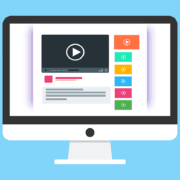Remote Access Software: What is It and Why You Need One

Beyond COVID-19, businesses are ready to establish at least a hybrid workforce where employees work both in the office and at home throughout the week. This will be impossible without the advancements in technology, specifically remote access.
Remote access software has become one of the most important tools in managing employees across different locations. Neil Patel highlighted some of the most popular remote access solutions in the market today.
But, before you choose a platform for your business, you should know the ins and outs of remote access and why you need one.
What is Remote Access Software?
Remote access refers to authorized personnel’s ability to access a system or a computer from a geographical distance using a network connection.
The user can access files and other system resources on any servers or devices connected to the network.
A remote access application is used to accomplish these tasks. Applications come with numerous features so your team members can work together seamlessly.
While each platform differs in functionalities, most have these essentials features:
- Two-Way Desktop Sharing. A remote access application allows you to see the remote computer’s desktop. Similarly, you can share your own desktop view with the other machine. This is essential when providing technical support or demonstrating product features.
- File and Clipboard Transfer. Remote access platforms make it easy to access files on another computer and download them to yours. You can also copy texts, commands, and scripts from the remote computer to your machine without using third-party communication software.
- Unattended Access. The ability of authorized users to connect to another system even when no one is present in the remote end. With this functionality, you will not have to disrupt the other user whenever you need to access a file or an app on their computer.
- Session Recording. While this can be accomplished using a third-party screen recorder, the ability to record your remote session within the same application is much more efficient. Having a video or snapshots of your session ensures transparency on both ends.
You can also explore advanced features depending on your specific needs. Functionalities such as multi-session handling, built-in messaging, reboot and reconnect, and more are available in most modern remote access applications.
Why Do You Need Remote Access Software?
Building a remote-working team brings unique challenges and opportunities to your organization. At the end of the day, you still need to make sure that your team stays productive. You still have meetings, presentations, planning, and other tasks, albeit in a different form. Remote access software can help you transition from a traditional office-based workforce to a completely remote team as seamlessly as possible.
Some of the advantages of using remote access software are:
Streamline Tasks and Workflows
Using remote access platforms, your staff can work on any device as long as they can access a network. They can quickly access files stored in your company servers or computers. That means they can remain productive regardless of their location.
Furthermore, some companies use proprietary software that can only be installed on corporate machines. Migrating these apps to new devices is expensive. Also, some enterprise-level applications require powerful computers that your staff may not have. Remote access platforms ensure that your team can still access your business tools without having to buy new hardware. They can connect directly to your machines in the office and continue their tasks.
Easy Collaboration
Remote access tools allow your team members to communicate and collaborate with one another without having to meet face-to-face. Screen sharing ensures that they are always on the same page. That means working together on a task is a breeze. Similarly, presentations and meetings can be conducted seamlessly by showing the presenter’s screen to the rest of the team.
Your clients also benefit from remote access apps. For example, your web designer can conduct a demonstration of the WordPress theme that they are creating for the customer. The client can clearly see the progress of the design. And, they can even provide interactive feedback using remote access tools.
Enhanced Monitoring
One of the challenges in shifting to a remote-working team is productivity. After all, without supervision, team members can wander off on the Internet and lose focus.
There are remote access platforms that can connect with multiple machines. These apps are often used for monitoring multiple computers. You can see your team members’ screen and check the progress of their tasks. The complete transparency ensures that your team is always on track and productive.
On top of that, you can keep a log of your team’s activities. Some remote access systems keep a record of who is accessing your company’s network and what they’re doing. These logs are necessary for auditing, especially if your organization follows regulatory guidelines.
Choosing the Right Remote Access Software
Remote access comes in all forms and functionalities. Depending on your company’s needs, you can use one or a combination of the following:
- Virtual Private Network (VPN) – It creates a secure “tunnel” between your office network and a remote computer. Once your computer is added to the network, it can access the same files, applications, and systems as if you are in the office. It provides the best security and privacy as authorization is required to join a VPN.
- SaaS Remote Access Tools – These are the most well-known remote access software. The desktop tools create a connection between a remote computer and another computer at the office. LogMeIn and TeamViewer are some of the most popular examples.
- Helpdesk or ServiceDesk Software – They are often used in customer support and technical services. It includes tools to assist end-users, especially in troubleshooting problems. Technicians use this type of application to remotely access and control a client’s computer.
Organizations will continue to face challenges as they shift to remote work. However, using the right tools can make the transition as smooth as possible. Remote access software ensures that your team can work and collaborate as they used to, even outside the office.












Leave a Reply
Want to join the discussion?Feel free to contribute!